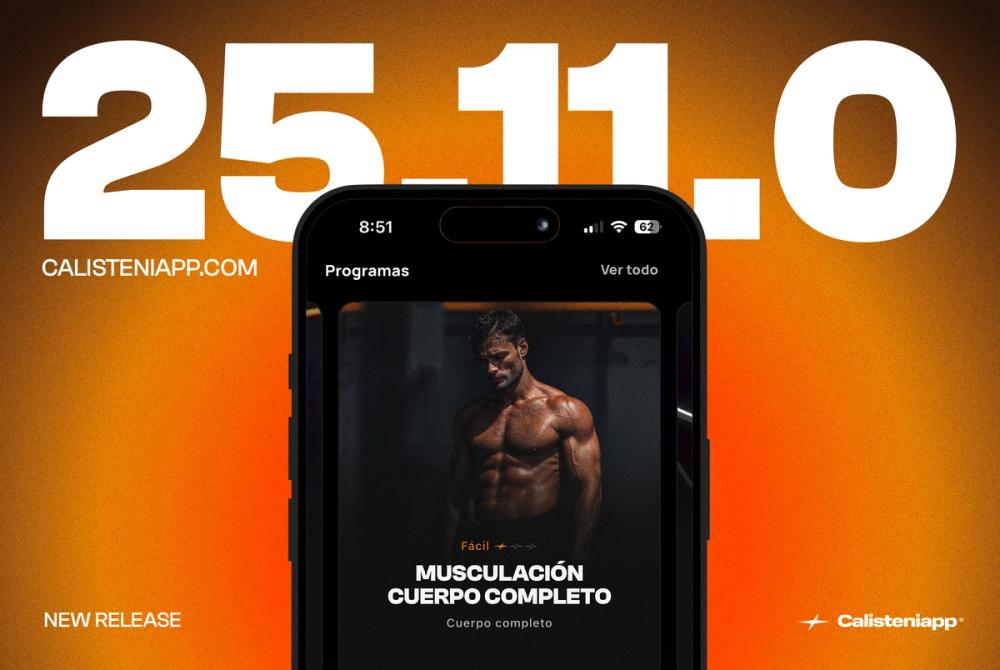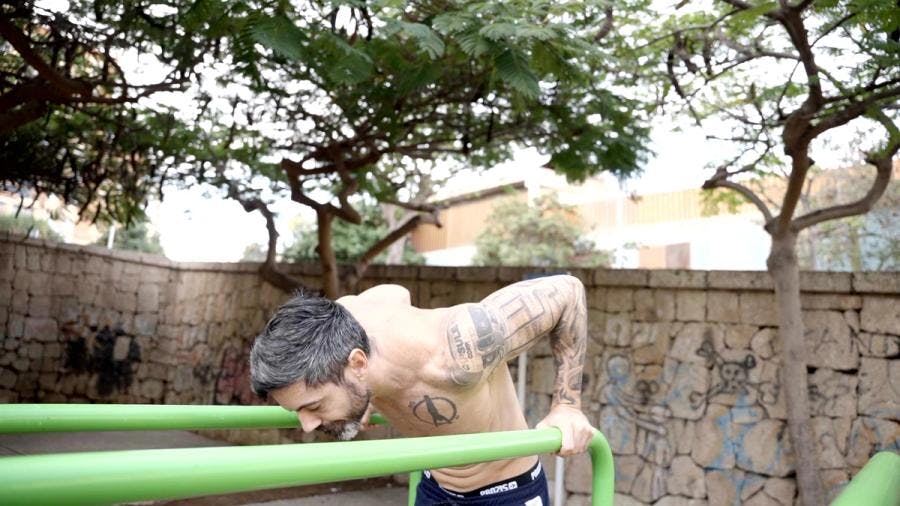
Release 25.11.0 - A new beginning
Calisteniapp is a symbol that represents our obsession with excellence, our essence, and the path we want to define for the next ten years.

Recently, I posted an Instagram story showing my friend RSWorkout doing weighted dips with an extended range of motion. He was going far beyond the typical 90 degrees, lowering himself as much as his shoulder joints would allow.
What struck me was that several people replied to the story saying things like, “Now those are strict dips,” or “That’s the proper technique,” and that dips done this way are way more effective.

Around the same time, someone in the Calisteniapp Discord shared a video of themselves doing dips and asked if their form was good. Again, they were using a much deeper range than usual.
That got me thinking—it’s worth diving into this topic. Is an exercise really more strict—whether it’s a dip, pull-up, or push-up—if we perform it with an exaggeratedly deep range of motion? Is it really that much more beneficial? Could it actually be harmful in some cases? When should we use an extended range and when shouldn't we? Let’s break it down.
When we talk about strict form in calisthenics, especially regarding range of motion, we’re referring to specific standards that define when a rep is considered strict. For example:
Most of us who care about clean technique go just a little beyond these marks—just a few extra centimeters—to make it obvious that the rep is strict, without needing slow-mo footage to verify it.
This gray area—where the athlete barely reaches the strict threshold, making it hard to judge—is something I’ve long referred to on my channel as "ego range." It means the athlete sticks stubbornly to the bare minimum standard, often to avoid fatigue and squeeze out more reps or lift heavier.
In competitive sports like Streetlifting, specifically in weighted dips, the rules actually require going slightly deeper than 90 degrees—the back of the shoulder must at least reach the height of the tip of the elbow.

There are two key factors to consider here:

This is how we define strict execution. And it leads to the big question:
As we've seen, if you’re hitting the proper range—plus a small buffer to avoid debate—then you’re already doing the exercise as strictly as needed.
Going much further than that, like using an exaggerated range of motion, isn’t necessarily stricter or better.
Take dips again: the definition doesn’t require you to lower your shoulders until they’re on the verge of dislocating. The definition of a push-up doesn’t say your chest must drop below ground level. A pull-up doesn’t require you to pull your navel above the bar.
So, an extended range doesn’t make the movement stricter. In fact, it’s best thought of as a variation—just like we have explosive dips or incline dips, there are also partial-range dips and extended-range dips. These are all just variations of the standard dip.

Extended range of motion adds another option to your toolbox, but it doesn’t mean you’re being stricter, better, or more effective just by going deeper.
In some contexts and for specific goals, it can be a smart choice. But the strict range is defined objectively, aligned with the true essence of the movement—and you don’t need to go beyond it to be doing things right.
Lastly, just a reminder that in Calisteniapp, we’ve got training programs for every level and goal. You can download the app right here.
By Yerai Alonso

Yerai Alonso
Cofundador de Calisteniapp, referente en calistenia y el street workout en Español. Con más de una década de experiencia, es creador de uno de los canales de YouTube más influyentes del sector. Autor del libro La calle es tu gimnasio, campeón de Canarias y jurado en competiciones nacionales e internacionales.
Join our newsletter
Learn everything you need to know about calisthenics

Calisteniapp is a symbol that represents our obsession with excellence, our essence, and the path we want to define for the next ten years.

Descubre los mejores ejercicios de antebrazo para calistenia. Mejora fuerza, agarre y control corporal con entrenamientos efectivos sin pesas.

Discover the 20 most effective ab exercises to train and strengthen your core through calisthenics.
